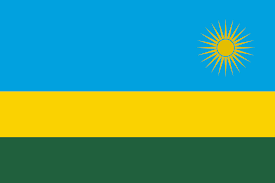Amazon: climate change is the main cause of drought
Last December, boats were no longer able to go up the river and its tributaries, cutting off the water and food supply to several villages in Brazil. The Amazon basin has been hit by an exceptional drought since mid-2023 due to low precipitation and persistently high temperatures throughout 2023. The Amazon has reached its lowest level in at least 120 years. The Amazon rainforest, the largest tropical forest in the world, but also the 30 million people who depend on the river, are threatened in Brazil, Peru, Colombia, Venezuela, Ecuador, and Bolivia.

Last fall, the Brazilian Ministry of Science, Technology and Innovation estimated that this severe drought was due to the appearance of the El Niño climatic phenomenon, which causes extreme weather conditions throughout the world. This phenomenon, which consists of a warming of part of the ocean, most often results in a rise in global temperatures and increases the risk of extreme climatic events in many regions.
Attribution Sciences
However, a study published by specialists in attribution science on Wednesday, January 24 contradicts this thesis. The science of attribution makes it possible to say to what extent a climate catastrophe is due to global warming and according to researchers from World Weather Attribution, this exceptional drought that the entire Amazon is experiencing “is largely due to climate change”.
Scientists, from Brazil, the Netherlands, Great Britain, and the United States, compiled data on the lack of precipitation and those relating to evapotranspiration, that is to say, all the water that evaporates from the ground, rivers, lakes, and vegetation under the effect of heat and a biting sun. The result is the lack of rain is caused half by the El Niño phenomenon, and half by climate change. Except that “global warming is almost entirely responsible for the phenomenon of evaporation and drying”, according to the study.
A report also contradicts the climate-reassuring discourses that attempt to minimize the impact of climate change and therefore man's responsibility in this catastrophe. And it is, as is often the case, "small farmers, indigenous communities and the poorest" who pay the high price, note the researchers, who also believe that "exposure to the impacts of drought has been aggravated by historical practices of land, water and energy management, including deforestation, vegetation destruction, fires, biomass burning, industrial agriculture, livestock farming and other socio-climatic issues, which have reduced the water and humidity retention capacity of the land.
Rainforest animals in danger
In addition to traffic on Amazonian rivers and agriculture, electricity production is also affected. “The vast river system supplies a significant part of the energy of the affected countries,” note the researchers. Brazil relies on hydropower for 80% of its electricity, Colombia for 79%, Venezuela for 68%, Ecuador and Peru for 55%, and Bolivia for 32%, according to USAids. Power outages occurred as early as June last year.
Human beings are not the only ones suffering from this terrible drought. All the flora and fauna of this incredible biodiversity hotspot that is the Amazon is affected. The largest tropical forest in the world also plays a vital role in the global water and carbon cycle.
One of the conclusions of the study is therefore to strengthen the drought plans put in place by the States within particular "early warning systems" for institutions and the population, "emergency plans in the event of aggravated drought, sustainable water management practices and investments in resilient infrastructure to meet future needs.”
Researchers warn: “Unless the world quickly stops fossil fuel consumption and deforestation, these events will become even more frequent in the future.”
 Kinyarwanda
Kinyarwanda
 English
English






























